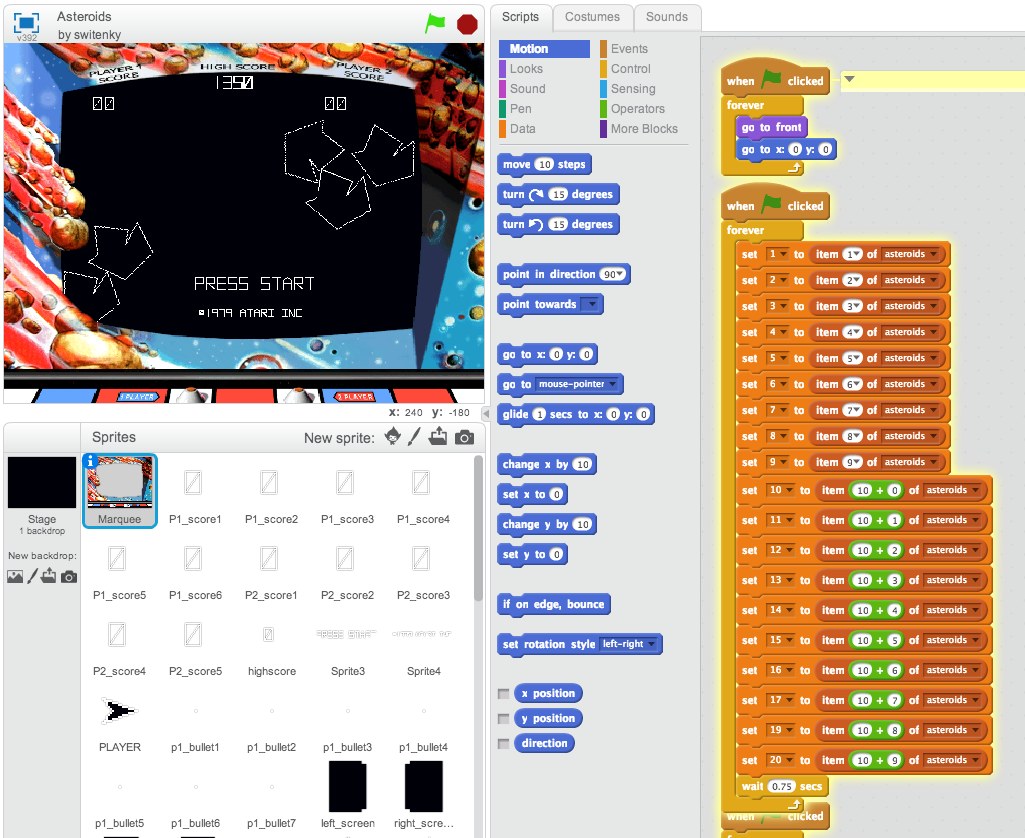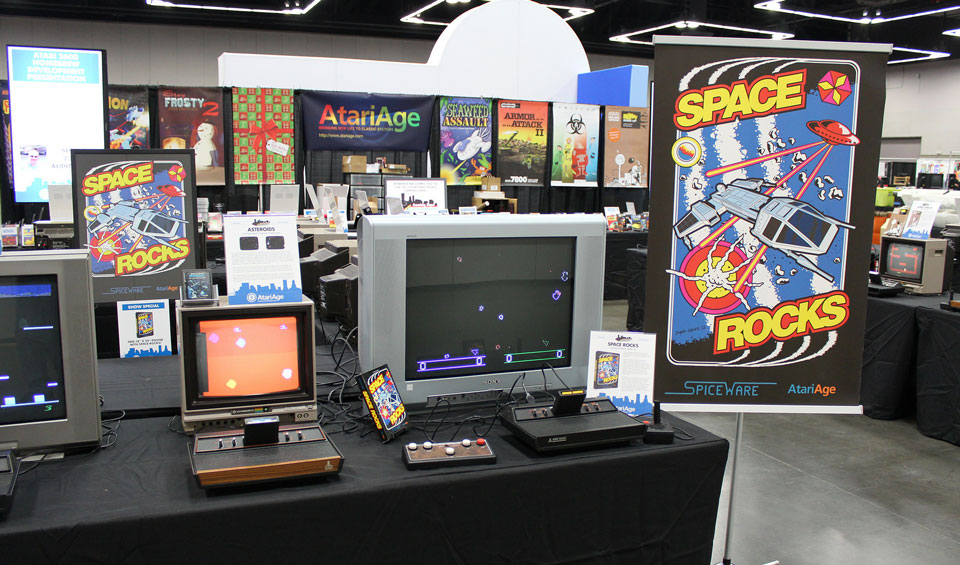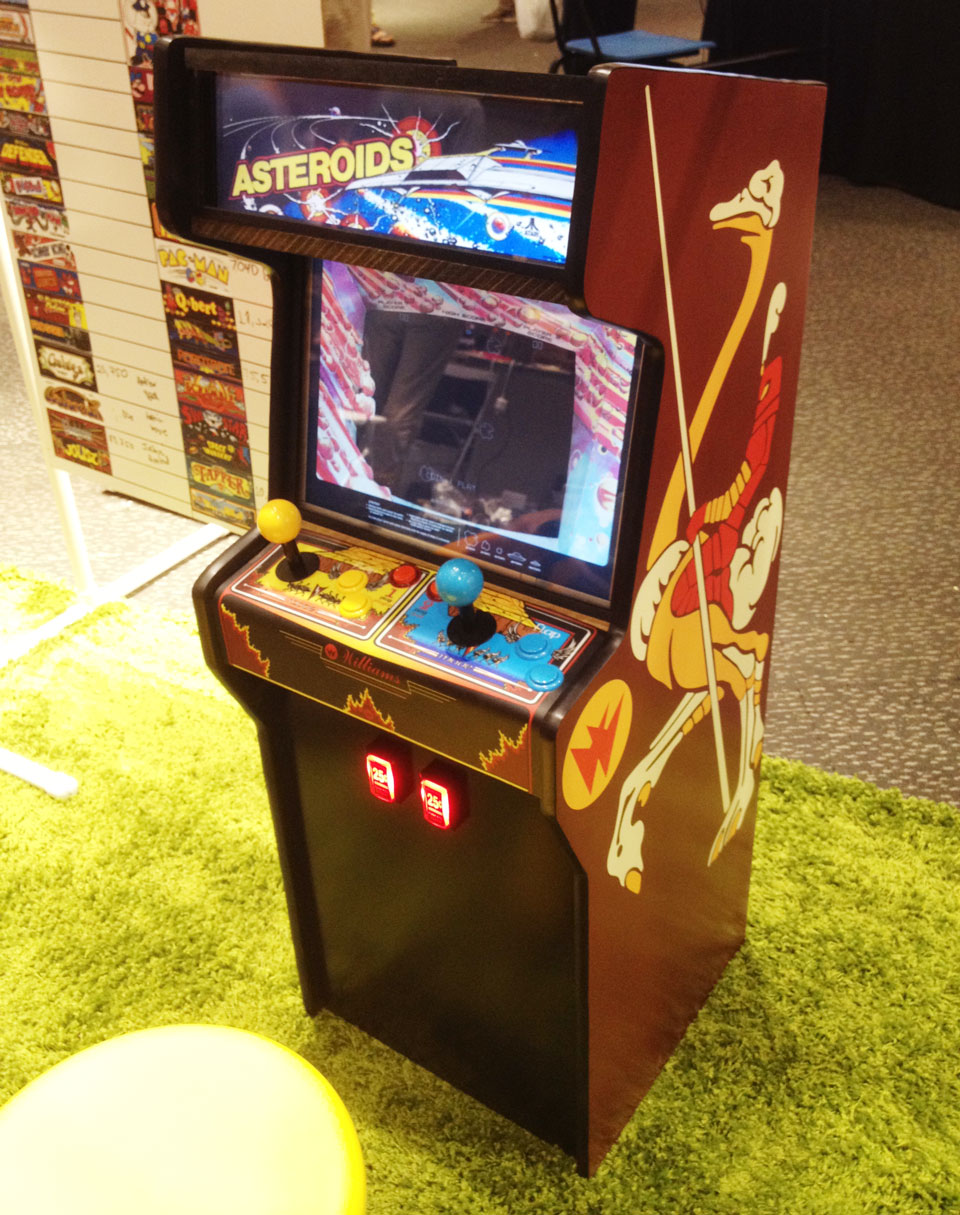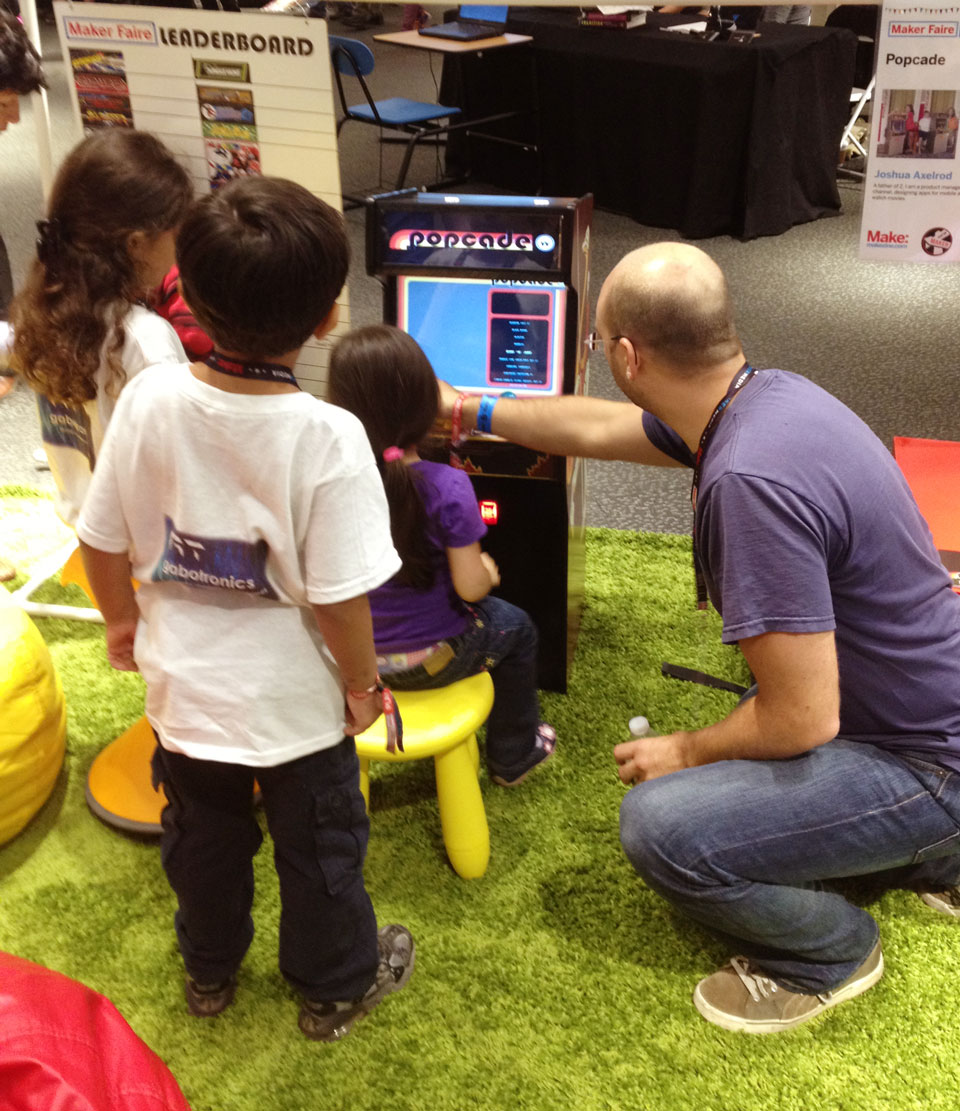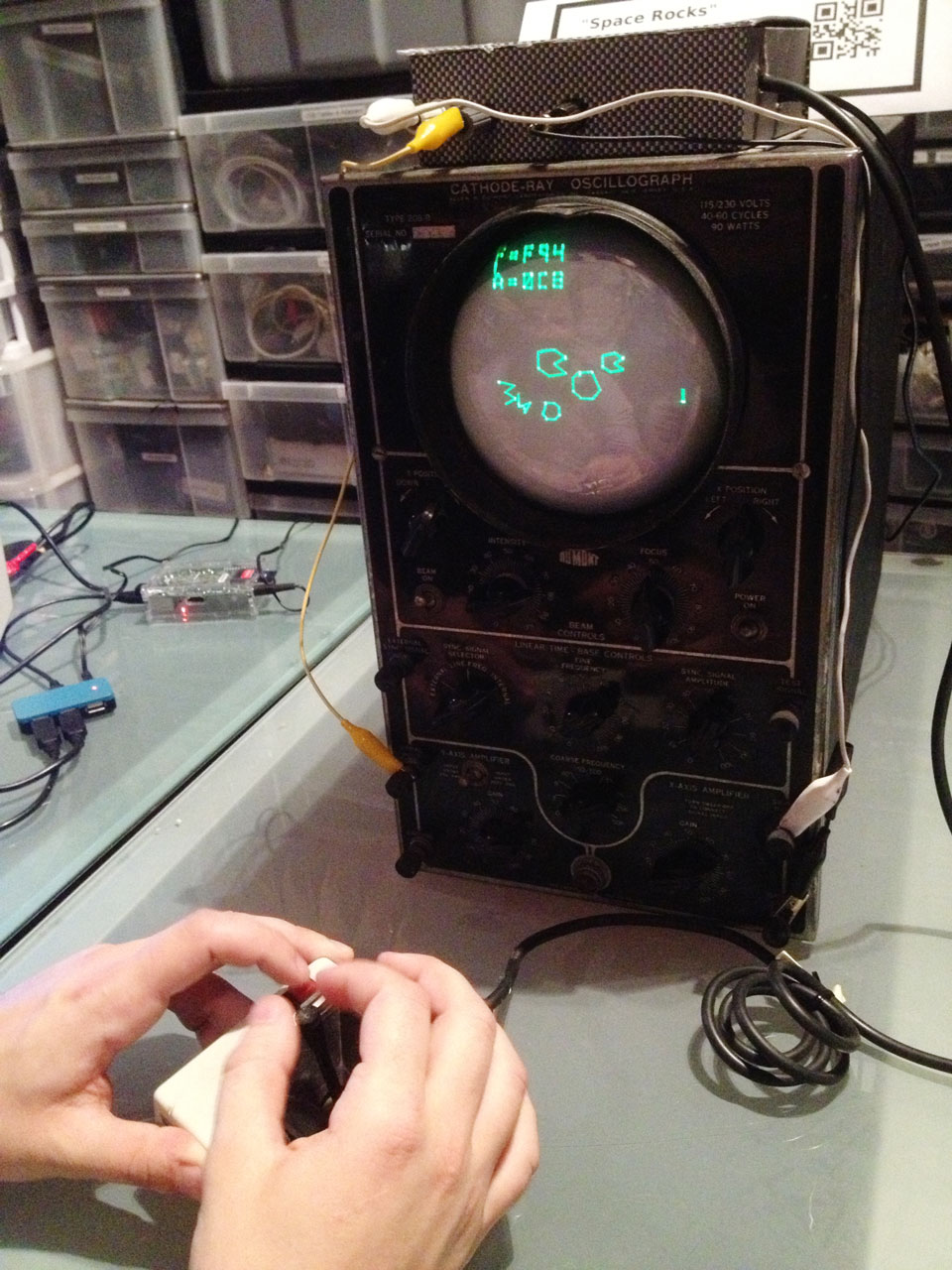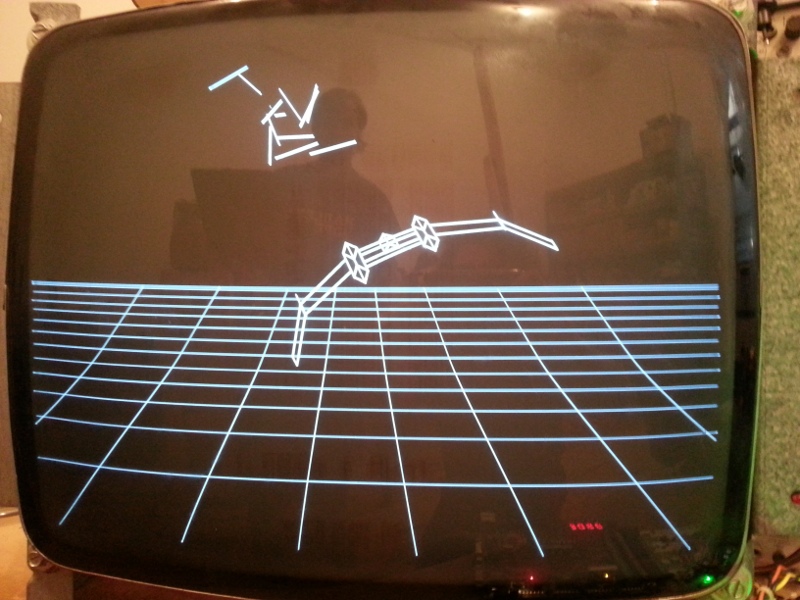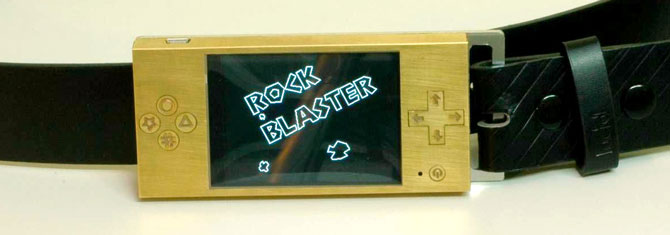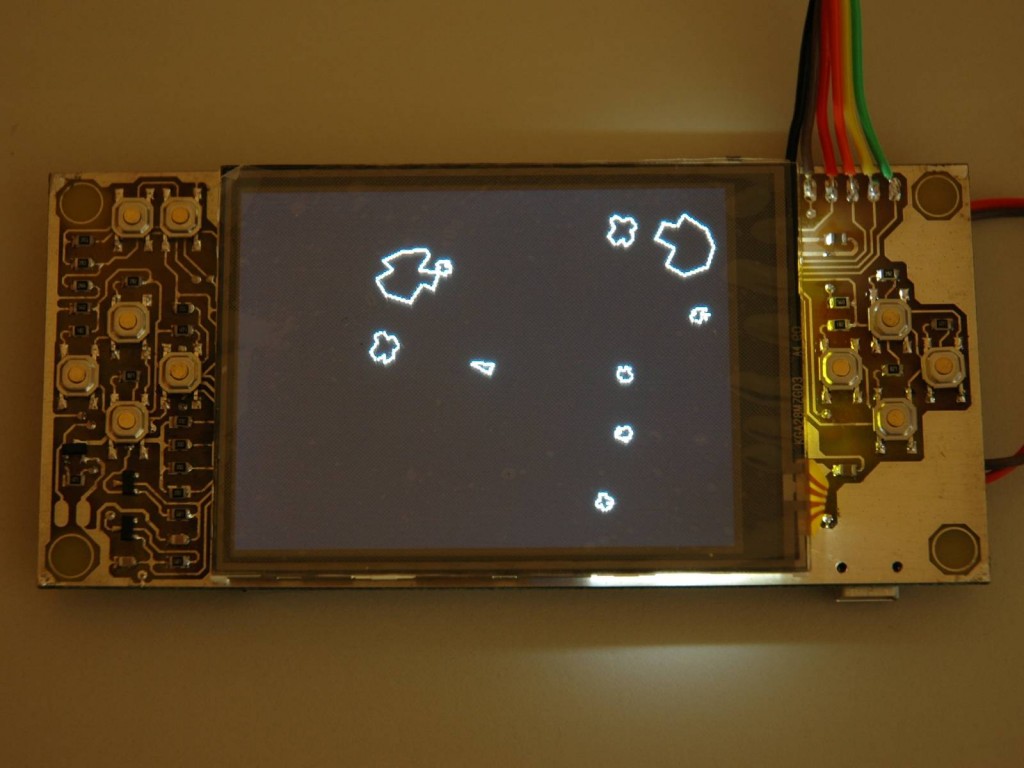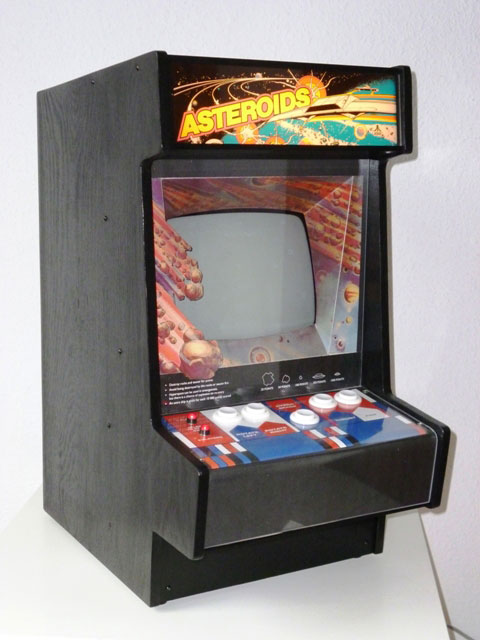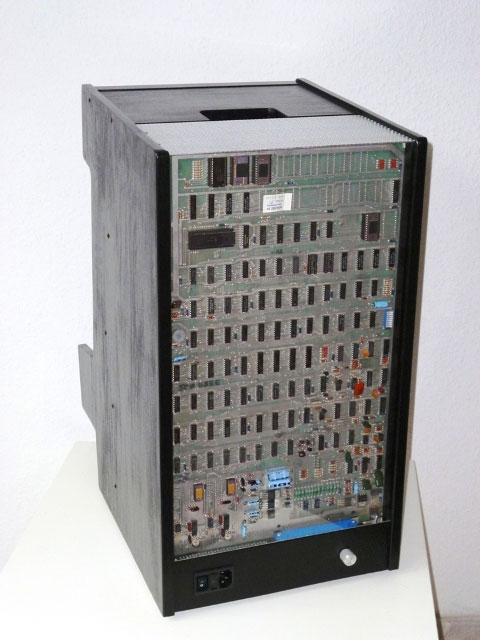Asteroids Reproduced with Scratch
Posted on January 22, 2014Here’s a clone of Asteroids created with Scratch, a popular educational programming language. What’s great is that even if you’ve never written a line of code, you can look under the hood and see how a game like this is put together — and if you want, you can tinker with it yourself.
Side-note, Scratch was developed at MIT Media Lab Lifelong Kindergarden Group. Also developed at MIT: Spacewar!. Read your history here.
Asteroids Controller with Raspberry Pi
Posted on December 27, 2013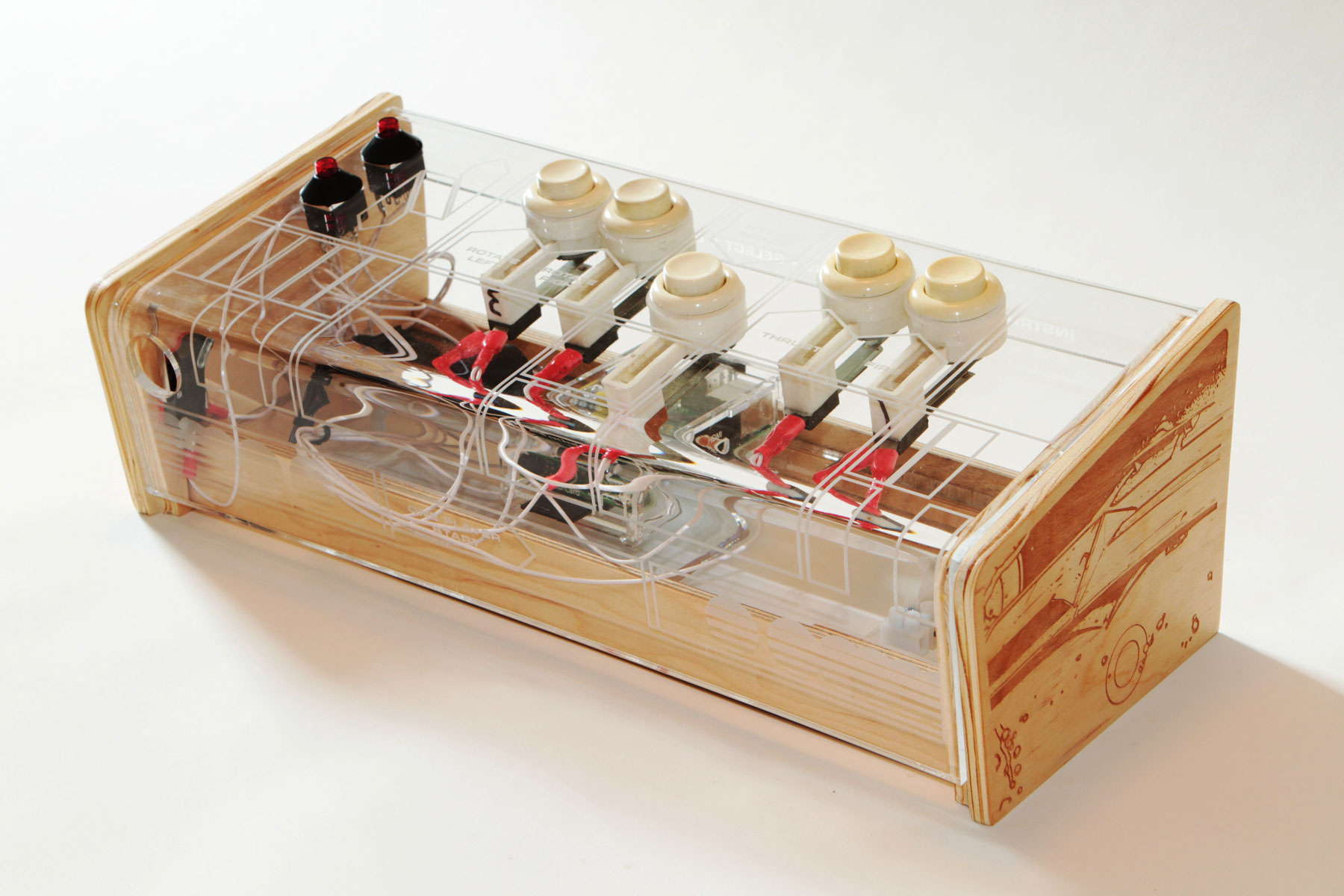
In addition to running this website, your humble blog host likes to tinker.
This past summer I had access to a laser cutter, CNC router, and some creative technology experts in New York — so I decided to learn some new tools and make a desktop Atari Asteroids controller running an arcade machine emulator (MAME) on a tiny Raspberry Pi computer. All you need to provide is power in and audio/video out.
Read the full write-up on my personal site for a walkthrough of the fabrication, plus design files.
And for anyone looking to build an Asteroids control panel, here’s the image I traced from an original:
asteroids_controls.pdf (editable PDF)
asteroids_controls_cs3.ai (Illustrator file)
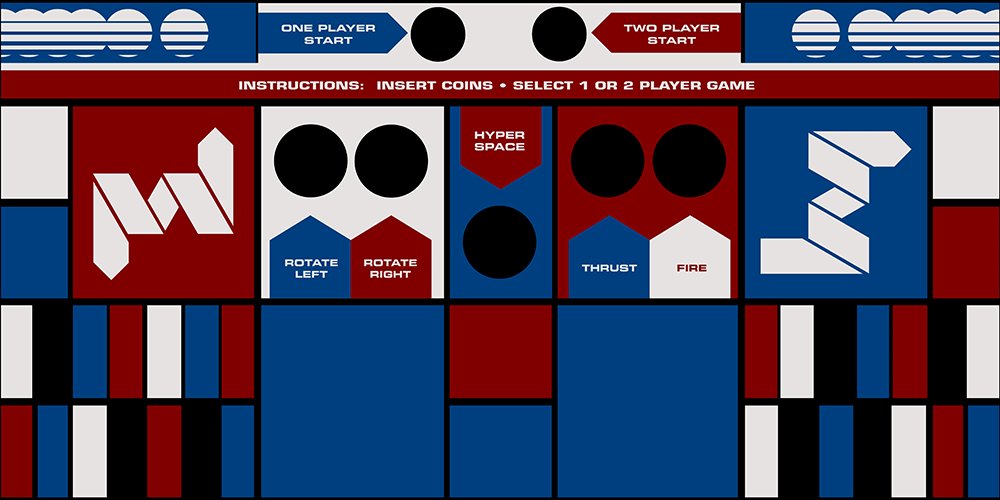
Space Rocks! Updates Asteroids for the Atari 2600
Posted on December 12, 2013Asteroids for the Atari 2600 is not the same thing as the arcade version. It’s got simplified gameplay and rasterized graphics. But Darrell Spice, Jr. has just created Space Rocks, a homebrew Atari game which brings arcade elements to the home console.
He explains: “Instead of the predominately up/down movement found in the original home version, Space Rocks features arcade like movement. The options menu lets you control the style of graphics (solid or ‘vector’), Magna-Mines (the ‘killer satellite’ from Asteroids Deluxe), friction (whether or not the ship will gradually slow down after thrust is removed) as well as other features.”
Space Rocks is as good as it sounds, and the player customizability is deep but intuitive. It was released at the Portland Retro Gaming Expo in October 2013 (pictured above), and available for purchase from AtariAge, as a dedicated cartridge with professional-looking packaging and artwork, for play on a real Atari 2600.
The final version of the game can also be downloaded for use with the Atari emulator Stella, or with a Harmony Cartridge for the 2600 via an SD card. The ROM is freely available in this discussion thread – to find it, take the very first link, for Release Candidate 7.
Spice explains that Space Rocks will not work with other Atari flash cartridges than Harmony, as “the game utilizes the ARM processor in the Harmony as a co-processor, similar to the DPC that’s found in Activision’s Pitfall II for the 2600.”
Darrell Spice, Jr. is actively involved with Atari Age and the homebrew scene. He says about the origin of Space Rocks:
“I was working on Frantic, a remake of Berzerk/Frenzy, when I wondered if the Kernel for Frantic could be used as a basis for a remake of Asteroids. TIA, the Atari’s video chip, is so primitive it only has enough information to draw a single scan line on the TV. The Kernel is the part of the program that updates TIA in real time, scan line by scan line, in order to create the display.
“The Kernel would have less to update, as Space Rocks doesn’t need the playfield (the chunky background graphics), so repositioning of the 2 sprites (yep, the 2600 only has 2 sprites) could be done more frequently than in Frantic. I thought that would result in result in less flicker, but wasn’t sure if it would be acceptable or not so I did up a quick test.
“I planned to return to work on Frantic after that, but like an earworm I couldn’t get the ideas for Space Rocks out of my head so I continued to work on it. I just wrapped up work on Stay Frosty 2, a new AtariAge holiday cart, so am taking a break from Atari projects and will most likely resume work on Frantic early next year.”
For more detailed development info about Space Rocks, visit Spice’s project blog:
http://atariage.com/forums/blog/blog-148/cat-120-space-rocks
And for Frantic:
http://atariage.com/forums/blog/blog-148/cat-59-frantic
Visit his website spiceware.org for more information.
Popcade Cabinet
Posted on September 29, 2013Joshua Axelrod unveiled his miniature MAME arcade cabinet at the New York MakerFaire, and it’s a beauty. He was inspired by the size of Jürgen Müller’s Asteroids Mini, and decided to expand its roster by making it a MAME machine modeled on the classic Williams Joust cabinet, capable of playing nearly any classic arcade game. Popcade is about three feet tall and thirteen inches wide, perfect to fit in a house or apartment without eating up an entire room.
Aside from spot-on design, the thing that makes Popcade stand out is the marquee and bezel art. Axelrod created files for a number of classic games; selecting a game from the main menu changes the marquee screen up top, and loads the bezel art around the game on the main screen. Each game feels like you’re playing a dedicated cabinet (aside from the Joust bird on the side, and the “Flap” label on the button).
Of course, Asteroids is one of the games, which caught our eye at MakerFaire. The Popcade is the perfect size for a small child, so Axelrod’s own children are learning about the classics.
You can buy your own Popcade at the Popcade website. It comes without game ROMs, but will run like a charm when you install them separately.
Space Rocks on Antique Oscillograph
Posted on September 26, 2013The folks at Brooklyn hackerspace NYC Resistor rescued a 1940s DuMont Labs 208B cathode ray oscillograph from the side of the road, and Trammell Hudson is driving it to do fun things with a microcontroller.
First up, he used this vector-based Asteroids font library to create a authentic 1940s-era Twitter client displayed on the classic scope.
But the pièce de résistance is Space Rocks, a version of you-know-what that runs on this hypnotic vector display. It’s presented as a “serious astronomical simulations and training system…”
While the Delta-V of the simulator space craft was optimistic for its era, the basic acceleration, velocity and position model is reasonably accurate. If the ship passes too closely to one of the space rocks, it is destroyed and the simulation restarts. Once the ship runs out of fuel (measured in hexadecimal in the upper left corner since the CPU can’t perform a DIV/MOD operation fast enough to display decimal numbers), it is stranded and unable to continue its mission.
Space Rocks runs off a Teesny board with code that’s available here. It has made public appearances at the NYC Resistor show in June, and at NYC MakerFaire in August. Check out the writeup on the NYCR blog for video and more.
New Game For Asteroids Vector Monitor
Posted on August 10, 2013Some engineering wizards in Brookyln have been working on a wonderful thing. They’ve written a vector generator in VHDL, designed a DAC/amplifier to run an old Asteroids G05 vector monitor, and hashed out the basics for a game in C.
The whole thing is run off a Linux box, with a second VGA screen acting as an HUD. The full game has yet to be written, but what they’ve got running now looks great.
Read all about it on Todd Bailey’s blog, and see some earlier tests of the system (code name VEC9) written up by Andrew Reitano.
Human Asteroids
Posted on May 30, 2013Just when we thought there couldn’t be anything cooler in the world of Asteroids, there’s this:
It’s Human Asteroids, a project by Two Bit Circus for their proposed STEAM Carnival, designed to turn kids on to Science, Technology, Engineering, Art, and Math.
Human Asteroids uses a Microsoft Kinect to track the player in a rolling chair, who becomes the spaceship. Asteroids are projected on the ground with lasers, and the player fires with a smartphone.
The player in the video is Nolan Bushnell, founder of Atari.
The STEAM Carnival has a Kickstarter campaign going until midnight on June 2, 2013. If successful (and at the time of writing, they’re close), they plan to take the Carnival on the road at several major west coast American cities.
[UPDATE] This story has been making the rounds today, and Two Bit Circus has just passed its fundraising goal of $100,000, with two days still to go.
Asteroid Belt
Posted on May 16, 2013Makers, behold: the Asteroid Belt.
An Australian known as cunning_fellow has made an LCD belt buckle that plays “Rock Blaster” (wink, wink). The whole project is extremely well-documented on instructables.com.
In the FAQs, he writes:
Q: It costs more to build than a RasPi and only runs at 16Mhz. Why did you bother?
A: If you don’t understand already there is little I can do to help you.
Read all about it at http://www.instructables.com/id/The-Asteroid-Belt/
Thanks to our friends at Adafruit for tipping us off.
See more Asteroids fashion in the archives.
Asteroids Videos
Posted on April 10, 2013People have been posting technical videos about Atari Asteroids on YouTube lately.
Here are (1) an arcade Asteroids Y-vector test point hooked up to an oscilloscope, (2) a short clip of an Asteroids machine with a vector glitch, and (3) a page-turn review of an Atari Asteroids operations manual and schematic.
Asteroids Mini
Posted on March 10, 2013Here’s the goal: having an Asteroids arcade machine at home, with authentic electronics and true vector display, but which isn’t the size of a refrigerator. Jürgen Müller in Hamburg, Germany, has built just that.
His half-scale Asteroids cabinet uses an original Asteroids game PCB and 9″ vector monitor from a broken Vectrex, housed in a custom-built cabinet. He also built a custom XY driver circuit to bring the Vectrex display up to the drawing speed required by Asteroids.
The project is well-documented on Müller’s website: http://www.e-basteln.de/asteroids/asteroids_intro.html
